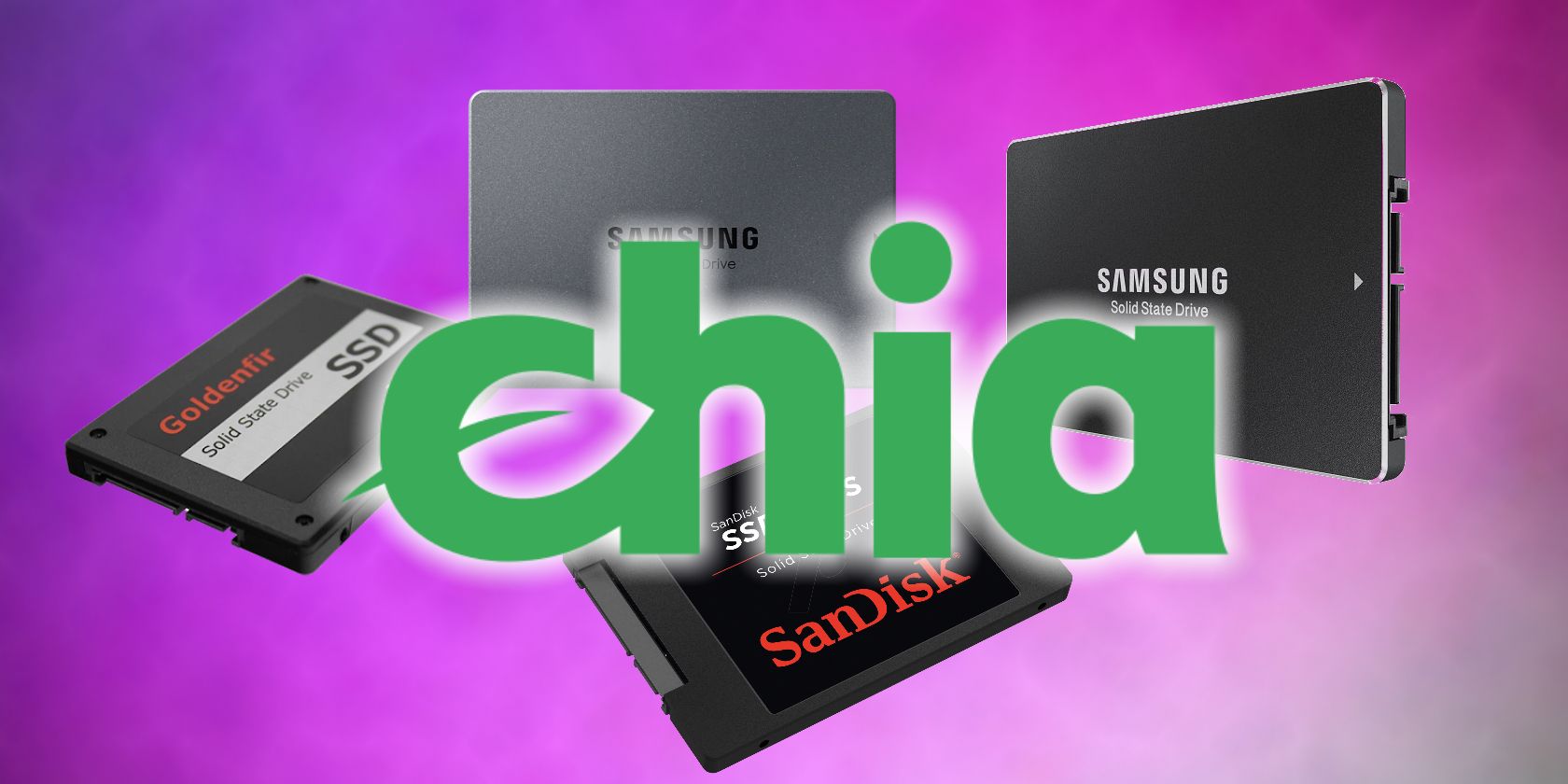A new cryptocurrency known as Chia could soon be responsible for a hike in hardware prices. The reason for this may surprise you, as the price increases are influenced by the validation mechanism used to produce blocks on the Chia blockchain.
If you’re interested in learning more about what the Chia cryptocurrency is and exactly why it is about to cause an SSD shortage, this is the article for you.
What Is the Chia Cryptocurrency?
Chia was developed by Bram Cohen, who is behind the peer-to-peer BitTorrent protocol.
Many have compared Chia to Ethereum and Bitcoin. Like Bitcoin and Ethereum, the Chia network has its own on-chain programming language, known as Chialisp.
Chialisp operates similarly to Ethereum’s Solidity in that it enables smart transactions. Chialisp is designed to make decentralized application technologies such as colored coins, multi-signature wallets, and recoverable wallets.
The Chia Network is meant to be as broad as possible so that validators (miners) do not have to purchase more expensive equipment as with Bitcoin and Ethereum.
Rather than using a Proof of Work (PoW) model, Chia uses a Proof of Space and Time model (PoST).
Instead of relying on processing performance to mine, it uses storage. This has several benefits, including reducing the amount of electricity that is wasted in the process of mining.
The Chia Network’s Proof of Space and Time (PoST) Algorithm
Bitcoin’s PoW mechanism relies on different validators on the blockchain, known as miners, to solve complex mathematical problems to validate transactions on the blockchain.
Bitcoin and many other blockchains use this method, but the negative environmental impact of the consensus mechanism has become more apparent in recent times. The amount of energy used is similar to the energy required to run some countries.
The Proof of Stake (PoS) mechanism allows for validation through the staking of cryptocurrencies on a network. On a PoS blockchain, the amount of tokens held on a network determines whether they are chosen to mine or validate the next block.
While this method uses less energy than a PoW algorithm, it may not be as effective in saving energy as the Proof-of-Space and Time model.
Blockchain validators on the Chia Network make it possible for the PoST mechanism to work. Unused computer storage space with strings of digits is loaded on the computers of validators. The likelihood of winning a block on the network is increased by acquiring more space and strings (e.g., buying more SSDs).
How Does Proof of Space and Proof of Time Work?
Proof of Space is a cryptographic technique where unused hard drive space is allocated for storage space. Proof of Space has to be tied to Proof of Time to be used as a consensus method.
With Proof of Space, participants must prove that they are keeping unused storage on their hard disk drive. Special software is installed, along with a collection of cryptographic numbers organized into “plots” on the system.
Chia Network participants are known as “farmers,” who scan their plots (storage) to determine if they have a hash to win the challenge.
To win rewards for creating blocks on the network, farmers must be able to provide enough total space. The chance of winning a reward depends on how much space you have compared to the network.
The team behind Chia is confident that people will use their network to verify transactions without being overly reliant on single-use hardware or electricity bills. It is hoped that PoST will help to lower the energy footprint of cryptocurrency technology without compromising the censorship resistance and decentralization that makes many blockchain-based solutions so useful.
The philosophy behind the creation of the validation mechanism stems from skepticism about the strength of PoS and PoW security against nation-states and other threats.
The Chia project may make it easier and safer to validate transactions than other blockchains. The network’s consensus mechanism could also help solve certain centralization issues experienced in PoW and PoS blockchains.
The Chai cryptocurrency mainnet was released in March 2021. This is in line with its plans to enable transactions on May 3, allowing for the tokens of the project to be traded by users.
The closer we get to the date of transactions being enabled, the more demand for storage components appears to grow.
How Could a Proof Of Space and Time Consensus Algorithm Cause an SSD Shortage?
It is no secret that the increasing popularity of cryptocurrencies such as Bitcoin has contributed to the shortage of graphics cards. This is because cryptocurrency miners buy graphics cards in bulk to run their operations. This is no different with farmers on the Chia Network who are already buying SSDs in droves.
Despite trading not yet commencing (it is scheduled to start trading on May 3rd, 2021), Chia is causing huge demand for SSDs. Prospective validators in China are purchasing as many SSDs and hard drives as they possibly can in preparation. According to the South China Morning Post, there is a shortage of SSDs and hard drives in China.
Other e-commerce markets report that hard drive models have sold out fast since the Chia mainnet launch occurred on March 19th, 2021. A significant amount of purchasers are said to be prospective Chia Network farmers. Prices of equipment in the secondary markets are said to be up to 50 to 60 percent higher than retail prices.
What is the reason for this newfound demand?
To put it simply, the Chia cryptocurrency was designed to be mined with SSDs and HDDs. Early uptakers are rushing to grab as much Chia as possible before becoming more difficult to mine or rising dramatically in price.
Can the Chia Network Reduce the Environmental Cost of Cryptocurrencies?
The Chia Network craze is not only taking place in the Chinese market.
A growing number of regions around the world are experiencing similar SSD shortages, with an increase in bulk purchases. In an attempt to combat this, stores are implementing new purchasing restrictions on SSDs and HDDs and regulations to maintain order, whilst manufacturers may look to increasing production where possible.
As more people anticipate the impending trading of Chia on May 3rd, 2021, hard drive and SSD sales will no doubt continue to increase exponentially. Despite attempts by some retailers to place regulations on sales, it is yet to be determined whether this will be enough to curb the shortage.
With higher trading of Chia, demand for SSDs could deepen as more miners seek to profit from the network.
About The Author

